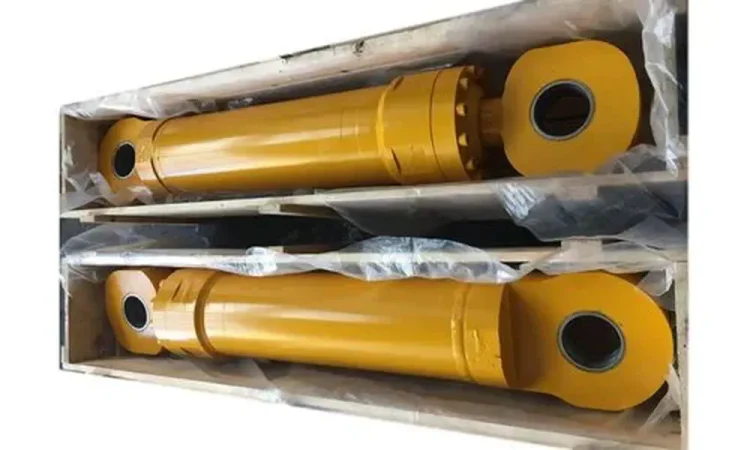
Linear actuators experience hydraulic fluid seepage over time. This happens through several wear processes that affect seals and internal surfaces. The leak paths form as a result of gradual wear, exposure to weather, entry of contaminants, and continuous stress during long operation. Understanding leak causation enables preventive maintenance strategies. Experience leakage from seal material deterioration, machined surface wear, contamination damage, thermal cycling stress, and improper installation alignment that collectively compromise pressure containment, allowing fluid escape past sealing interfaces.
Seal material deterioration
Elastomeric sealing parts go through ageing over time. Their material strength and flexibility slowly reduce due to chemical changes and long use. Polyurethane and nitrile rubber begin to harden as the softening agents move out of the base material. When this happens, the seals lose their natural shape and flexibility needed to hold contact with the cylinder surface. Small gaps start to appear and allow oil to pass through, making this process faster. The seal life can drop to a few months for Hydraulic rams that work at high temperatures. As the weather gets colder, the seal becomes stiffer and more fragile. Cracks form when the cylinder moves under stress. A poor match between the fluid and the seal compound leads to swelling or breakdown of the seal. Some hydraulic oils harm synthetic rubbers, while other synthetic fluids damage different compounds. Contaminated oil that holds water or acid attacks the seal chemically. This speeds up the wear and weakens the material. External seals on rods can also fail when sunlight breaks down the surface.
Surface wear patterns
Cylinder bore and piston rod surfaces develop wear marks from years of reciprocating motion under high pressures and loads. The polished chrome plating on piston rods wears through, exposing base steel in high-wear zones near stroke midpoints where maximum velocity and pressure coincide.
- Circumferential scoring from entrapped particles creates permanent leak paths
- Longitudinal grooves from piston side-loading concentrate wear in narrow bands
- Taper wear where one stroke end sees more use than the opposite
- Bell-mouth distortion where the bore ends wear differently from the middle sections
- Surface roughness increases from corrosion pitting or chemical etching
The worn surfaces cannot be effectively sealed, even by new seals, as grooves and roughness provide fluid bypass routes around seal lips. Minor surface wear within specification limits gradually expands until exceeding tolerance bands, where effective sealing becomes impossible without cylinder reconditioning through honing or sleeving operations.
Temperature cycling effects
In a repeated heating and cooling process, steel, aluminium, bronze, and elastomers expand at different rates, resulting in stresses on cylinder components.
- Hydraulic fluid becomes thin at high temperatures, reducing its ability to lubricate
- Acidic byproducts of thermal oxidation attack seals due to fluid degradation
- Temperature fluctuations cause seal extrusion from grooves at temperature peaks
- Condensation from cooling cycles introduces water contamination
Desert environments combine high ambient temperatures with solar radiation, creating extreme operating temperatures. The thermal stress compounds mechanical wear, accelerating leak development. Hydraulic cylinder leaks develop through seal material deterioration from ageing processes, surface wear patterns from operational friction, contamination-induced damage accelerating degradation, temperature cycling effects creating thermal stress, and installation alignment issues causing uneven loading. These cumulative mechanisms progressively compromise sealing effectiveness over equipment service life.




